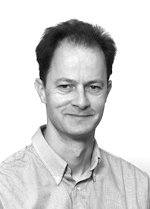- Benoit Rivard is a full professor in the Earth and Atmospheric Sciences Department at the University of Alberta.
Research Area
Geoprocessing; Development and application of innovative hyperspectral techniques for mineral exploration, Combined optical and radar airborne and satellite remote sensing for geologic mapping and environmental monitoring; Infrared characterization of terrestrial materials.
Research Interest
Benoit Rivard is a geologist with particular interest in the development of applied geological remote sensing. Remote sensing can be used to investigate processes that have modified planetary surfaces over wide ranging spatial and temporal scales. These modifications are represented in the material properties of the surface (mineralogy, composition, texture, physical state). The measurements of reflected and emitted radiation in the laboratory, the field, or from airborne or spaceborne platforms carry fundamental information about the material properties. Through the use of models and analytical techniques, remotely sensed data can be reduced to provide useful information about the properties of surfaces. The challenge is to provide reliable predictions. In this respect one of my key research preoccupation is to develop the analysis of hyperspectral sensing (field, airborne and spaceborne) to improve the effectiveness of oil/mining industry, and mapping agencies to delineate and manage their targeted resources. - With graduate students and post docs I have been working:
 To automate the hyperspectral analysis of rock cores and wall rock toward mineral mapping and rock type classification. This meant improving our scientific understanding of the visible, near-infrared, and thermal infrared scattering properties of ore minerals, and broken and cut rock surfaces in general. To automate the hyperspectral analysis of rock cores and wall rock toward mineral mapping and rock type classification. This meant improving our scientific understanding of the visible, near-infrared, and thermal infrared scattering properties of ore minerals, and broken and cut rock surfaces in general. To improve the analysis of hyperspectral imagery for northern regions (e.g. Baffin island). Because northern latitude are remote and difficult to access I have put an emphasis on the specific issues related to the analysis of imagery for northern regions and we are developing tools specific to this analysis. To improve the analysis of hyperspectral imagery for northern regions (e.g. Baffin island). Because northern latitude are remote and difficult to access I have put an emphasis on the specific issues related to the analysis of imagery for northern regions and we are developing tools specific to this analysis. To improve the analysis of hyperspectral data for tropical forests. This work is done in collaboration with my colleague Dr. Sanchez st my former institution, the University of Alberta. To improve the analysis of hyperspectral data for tropical forests. This work is done in collaboration with my colleague Dr. Sanchez st my former institution, the University of Alberta. To develop applications of endmember extract to canopy investigations and monitoring of invasive species. To develop applications of endmember extract to canopy investigations and monitoring of invasive species. |
 |

